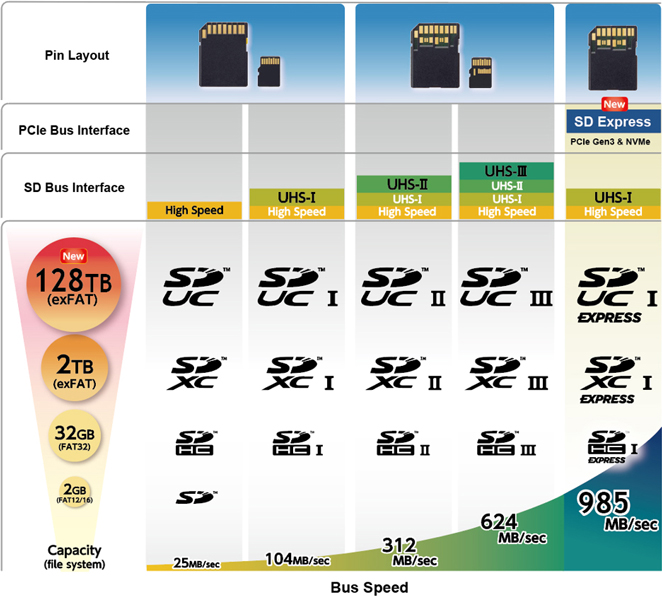
After a thankfully brief absence, microSD card slots are a staple of today's smartphones across all price points and the technology is about to take a major leap forward. At MWC Shangai, the SD Association unveiled the new SD Express standard, which is set to boost speeds and introduce new functionality to the popular portable memory format.
SD Express incorporates PCI Express and NVMe interfaces into the legacy SD interface, two common data bus standards found across the PC space. These interfaces will be supported on the second row of pins that are already used by highspeed UHS-II microSD cards on the market today.
Supporting PCI-E 3.0 with SD Express means that peak throughput can hit a whopping 985MB/s, which is more than three times faster than UHS-II cards which top out at 312MB/s and even faster than UHS-III cards that support up to 624MB/s. Meanwhile, NVMe v1.3 is the industry standard used for solid state drives (SSDs), which means that upcoming SD cards will be able to serve as removable SSDs for plug and play access to large amounts of data, software, and even operating systems.
Memory bandwidth is still often a limiting factor in smartphones, and the latest use cases are more demanding than ever. High data speeds are required for moving around ultra high-resolution, 360-degree, and slow-motion video, editing RAW images, and loading high-quality assets for immersive apps like games and augmented reality. SD Express will not only allow users to quickly access and store data but port it between devices with a wider range of interface types too. Using PCI can even consume less power than traditional SD cards.
In addition to supporting higher speed memory interfaces, the maximum storage capacity of future microSD cards is set to increase from 2TB with SDXC to 128TB with the new SD Ultra-Capacity (SDUC) cards. That's more space than I can ever imagine needing.
SD Express remains backward compatible with existing microSD cards and ports, but you'll be limited to the lower speeds. So a UHS-I device will be capped at 104MB/s even with a SD Express card. Unfortunately, there are a few compatibility issues with newer card types too that will cap speeds, as a UHS-II or UHS-III card will revert to UHS-I speeds in an SD Express host because the pins are repurposed. To differentiate the new capabilities from the old cards there's a new EX I marking to keep an eye out for.

SD Express capabilities will be offered on SDUC, SDXC, and SDHC memory cards first, and this could well mean the end of the line for UHS issue cards going forward. If you're in the mood for a read, there's a white paper that goes into lots of depth about how the new standard works.
from Android Authority https://ift.tt/2Kl88KT
via IFTTT

Aucun commentaire:
Enregistrer un commentaire